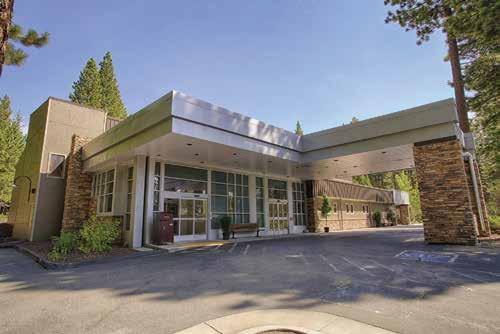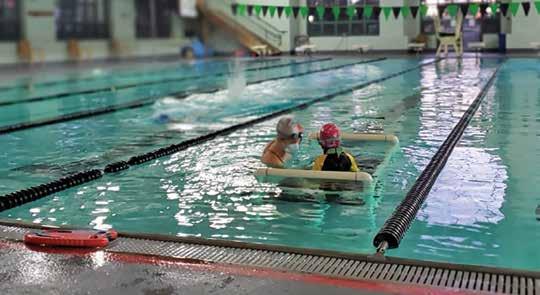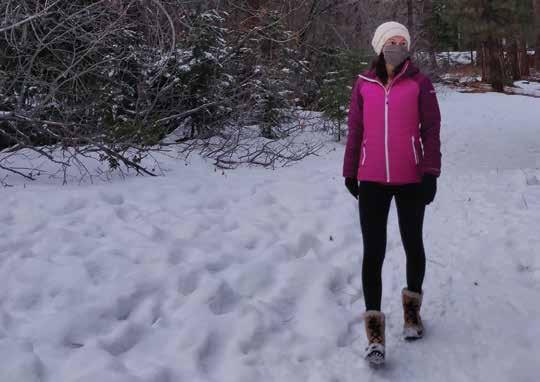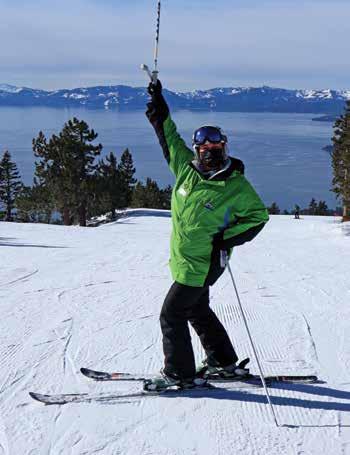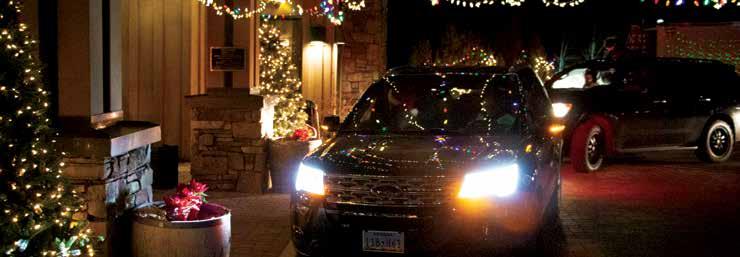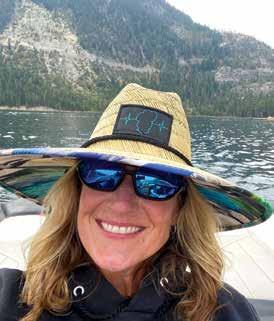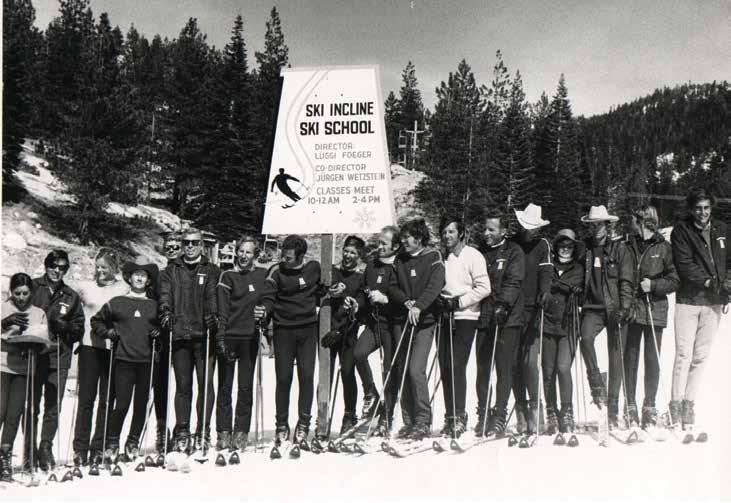
6 minute read
Diamond Peak History & Sustainability
Diamond Peak Ski Resort began in 1966 as Ski Incline, the brainchild of Incline Village developers Art Wood and Harold Tiller. Wood had a master plan for a year-round, resort community at Lake Tahoe – Incline Village was to become the “Pebble Beach of the Sierra” – and in 1966, Wood and Tiller hired Austrian ski consultant Luggi Foeger to design and build Ski Incline. Initially proposed on the slopes of Rose Knob Peak (the flat-topped peak to the north of Incline Village), Foeger recognized immediately that Rose Knob Peak would never work as a ski area due to its lack of beginner and intermediate level terrain and the south-facing orientation of the slopes (meaning it received too much sun during the winter for a dependable ski season). After exploring the peaks and ridges around Incline, Foeger chose the current location of the resort because it had an excellent variety of terrain, faces north-northwest, is easily accessed from the center of Incline, and offers beautiful views of Lake Tahoe.
The one drawback to the resort’s location – its relatively low elevation and proximity to the air-warming waters of Lake Tahoe – was addressed by installing the first snowmaking system in the western United States. And on November 19, 1966, after
Advertisement


LIFT TICKETS* & RENTALS MUST BE PURCHASED ONLINE
(even day-of)
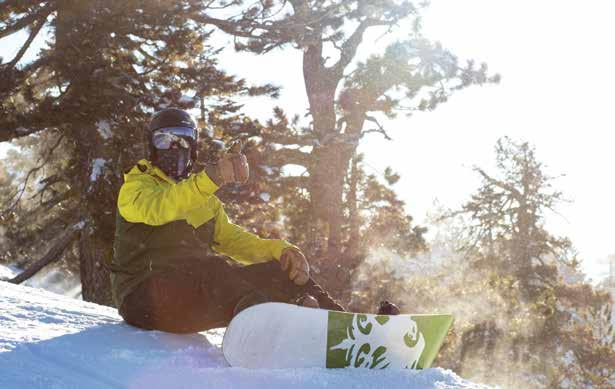
only four months of construction, Ski Incline opened its doors. That first season turned out to be a great one, with the resort operating for its longest season on record to date – 170 days from November 19, 1966 until May 7, 1967.
In 1987, Ski Resort Manager Jurgen Wetzstein led the development of the upper mountain and the addition of the mile-long Crystal Quad chairlift to reach the top of the peak. This expansion doubled the resort’s skiable acreage and added more advanced terrain. With the increased acreage, the resort extended the snowmaking system to cover the upper mountain along with adding more grooming equipment. Since most of the new trails were black diamonds, Ski Incline was renamed Diamond Peak. 1987 was also when the Child Ski Center was developed and the resort added a free shuttle service throughout the community.
With the turn of the century, Diamond Peak embarked on a twopart, $8.5-million-dollar capital improvement project. In 2002, it again expanded and improved the snowmaking system to permit snowmaking capabilities on 75 percent of developed terrain. The outdoor seating at the mid-mountain Snowflake Lodge was also renovated and expanded with a new wrap-around deck featuring panoramic views of Lake Tahoe and the Sierra Nevada mountain range. In 2003, Diamond Peak replaced its old Crystal Quad with a new high-speed detachable Crystal Express quad to the top of the mountain.
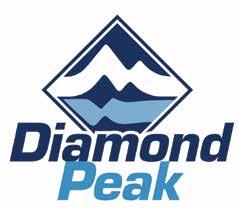
In 2008, Diamond Peak spent $4 million dollars renovating the base lodge which included an expanded rental shop, Loft Bar, and 300-squarefoot outdoor patio, in addition to the existing wrap-around sun deck, a 300-square-foot meeting room, new restrooms, fixtures, siding and more. In the summer of 2009, Diamond Peak upgraded its snowmaking system to allow for more efficient snow production. In 2010, Diamond Peak
Continued on page 18


completed a large renovation project with a new Skier Services Building, featuring a plaza area, ticket windows, Child Ski Center, Ski Patrol, and offices. In 2014, Diamond Peak added electric vehicle charging stations, two new snowcats, and upgraded its grooming fleet with SNOWsat grooming technology.
During the spring of 2018, Diamond Peak was recognized for its sustainability initiatives as the first ski resort in Lake Tahoe to become STOKE Certified. As one of the early adopters of the STOKE Snow certification program during the 2015/16 season, our community-owned ski resort has been diligently following our Roadmap Report to achieve best practices in snowmaking, interpretation, waste diversion, and community development. STOKE Certified — the Sustainable Tourism and Outdoors Kit for Evaluation — is the world’s first sustainability certification body with standards built specifically for surf and ski tourism operators. The mission of the organization is to assist resorts in developing systematic approaches to sustainability, environmental responsibility, customer loyalty and staff retention.
During the 2017/18 ski season, Diamond Peak was evaluated against the 110 criteria in the STOKE Snow standard by an independent evaluator. The ski area achieved an overall compliance score of 78% across all four categories of sustainability performance, making it the second STOKE Certified ski area worldwide, behind Oregon’s Mt. Ashland Ski Area.
Diamond Peak continues to make improvements to snowmaking – including the purchase of four new TechnoAlpin high-efficiency TR8 snow guns during the 2019-20 ski season – and is continually assessing the system for upgrades to maximize snowmaking capacity and efficiency. Diamond Peak has also upgraded its grooming fleet with the addition of new PistenBully 400 ParkPro snowcats during both the 2017-18 and 2019-20 seasons.
Diamond Peak Ski Resort is one of many resorts that recognizes global warming and the effects that pollutants have on our environment. These are a few things that Diamond Peak has done and continues to do to join the cause in helping our winters stay cool:
• Installed two ChargePoint electric vehicle charging stations at Diamond
Peak (upper lot) and two down the road at the Incline Championship
Golf Course (955 Fairway Blvd).
• Installed automated thermostats in our facilities, thereby reducing our energy use by at least 20%.
• Continually upgrade our snowmaking system to use newer, more energy-efficient technology including advanced TechnoAlpin fan guns and low-energy HKD snow guns.
• Installed Evolution (EVO) boilers for more efficient heating in the Skier
Services Building.
• Encourages carpooling by offering two shuttles that pick up in and around the Incline Village community.
IF YOU LIVE TOGETHER, YOU CAN RIDE TOGETHER

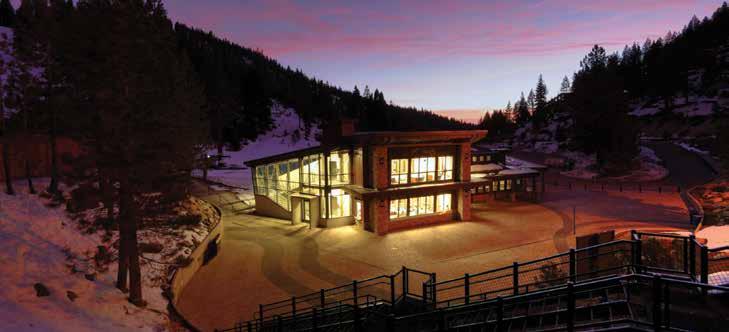
• Installed dual-flush toilets, thermal windows, and new lighting to conserve water and energy.
• Installed hydration stations with sensors to encourage the use of reusable beverage containers, which are sold in the food court.
• Educate employees and the community through IVGID’s WasteNot programs, orientation and signage in the Base Lodge.
• Encourage recycling by making recycling bins readily available.
• Participate in "Take Care Tahoe" regional sustainability campaigns.
• Control soil erosion through slope maintenance, BMPs, and water bars to help protect Lake Tahoe water clarity.

• Completed STOKE evaluation and received STOKE Certification in 2018.
• Use environmentally-safe, recyclable and biodegradable containers and utensils in food and beverage outlets.
• Print trail maps using mineral-based "stone paper" resulting in more durable/reusable product and no trees being harvested to produce paper.

